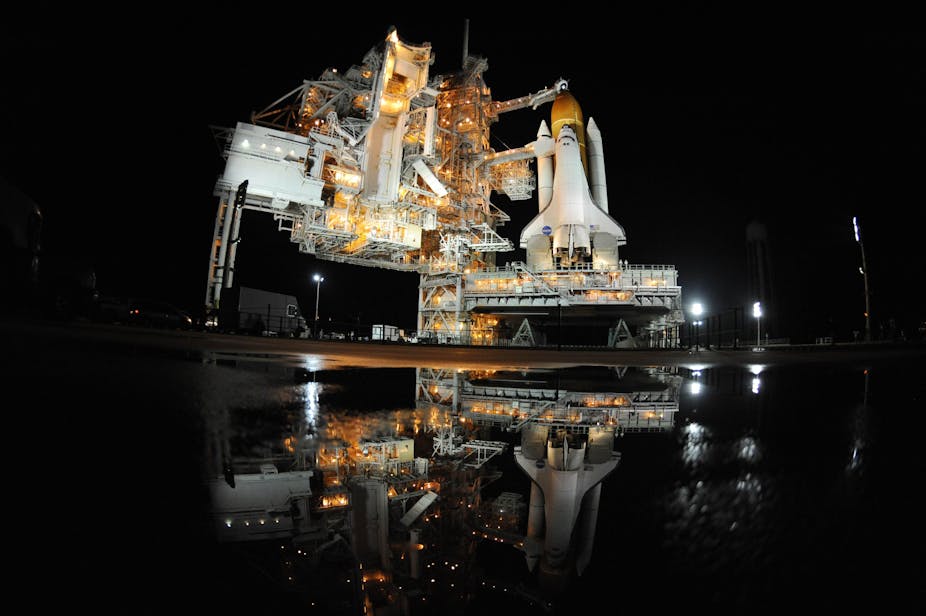The Space Shuttle Endeavour, one of the most complex machines ever created, is about to take its last trip into space.
But not just yet.
The countdown to Endeavour’s final flight began a few days ago, and it progressed well until around 12:30pm Eastern Daylight Time (EDT) on April 29 (the planned launch time was 3:47pm EDT).
The tanks were full, the astronauts were all suited up and on their way to the launch pad when the word came – the launch was to be delayed.
Over the years, the shuttle has seen many launch delays, and the current one involves issues with what are called the Auxiliary Power Units (APUs in NASA speak).
The APUs power the hydraulic systems that control the flight direction of the shuttle, and are essential for launch.
It easy to be critical of these delays, but we must remind ourselves the tremendous complexity of this machine, which is part aircraft and part spacecraft.
Despite the fact that most of us nowadays have more computing power on our desk than it takes to operate a shuttle, the technology involved is still pretty impressive.
One example of this is the temperature changes the shuttle must withstand. When the shuttle sits on the launch pad it gets filled will thousands of litres of liquid oxygen and liquid hydrogen.
These propellants must be kept at temperatures hundreds of degrees Celsius below zero, otherwise the tanks will explode.
So after launch, as it races to orbit with its skin blistering hot from friction with the air, these gases must remain cool.
When any material is heated it expands (i.e. extends in length) and the opposite is true when materials are cooled. So before launch the tanks inside the space shuttle try to contract, while after launch the outer skin of the shuttle wants to grow.
It’s a major engineering feat just to keep the whole space vehicle together.
Endeavour will be visiting the International Space Station on the upcoming flight, and it will deliver an important piece of scientific equipment called the Alpha Magnetic Spectrometer.
This equipment will remain on the Space Station for many years to come, analysing sub-atomic particles in an effort to better understand the structure of the universe.
Similar experiments on Earth can only examine particles that can make it through our atmosphere.
Placing the Alpha Magnetic Spectrometer on the Space Station means that many more particles can be observed, some of which may not have been observed before.
The first Space Shuttle flew in 1981, and since then the five vehicles (Columbia, Challenger, Discovery, Atlantis and Endeavour) have flown more than 130 times into orbit. Endeavour’s upcoming flight is it’s last, and the second last for the entire program.
The latest word from NASA is that Endeavour will not launch before next Tuesday, May 10. US President Obama plans to attend the launch, along with tens of thousands of visitors to NASA’s Kennedy Space Center.
As we get closer to the last flight, it’s only natural our fondness for this amazing vehicle grows stronger.

